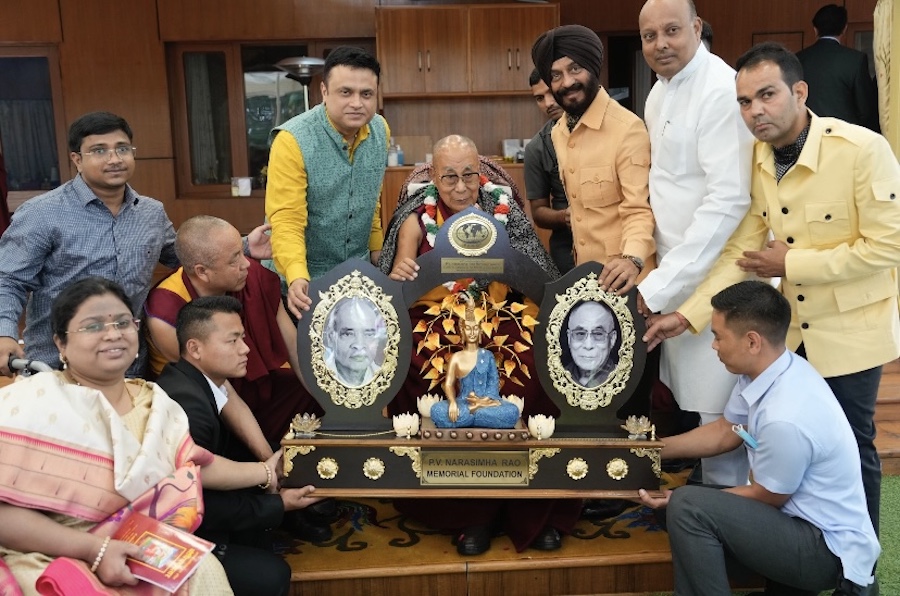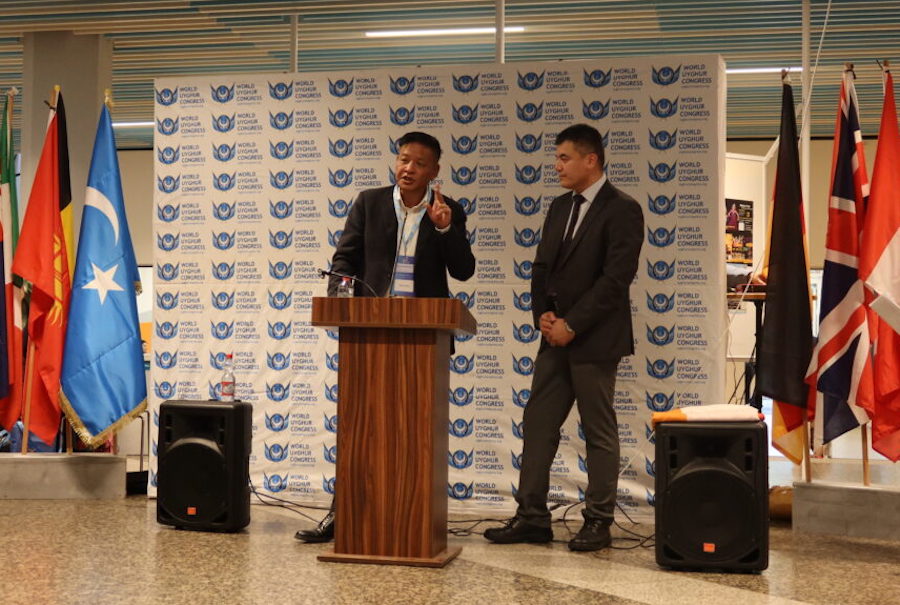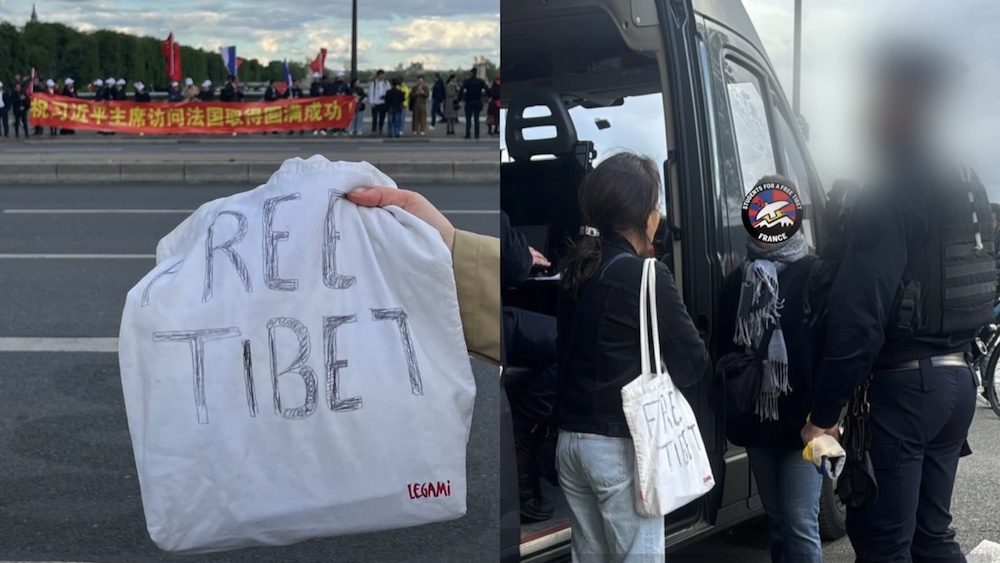By Tsewang Lhadon
 Going by the unprecedented exemplary show of strength and solidarity for the cause of Tibet in recent times, especially observing the extraordinary protest rallies across the world this March 10th 2007; it is evident that there is an emerging alternative force that is taking on the reigns of the Tibetan freedom struggle.
Going by the unprecedented exemplary show of strength and solidarity for the cause of Tibet in recent times, especially observing the extraordinary protest rallies across the world this March 10th 2007; it is evident that there is an emerging alternative force that is taking on the reigns of the Tibetan freedom struggle.
Ordinary Tibetans are embracing the generally so-called “nonconformist” brazen outspoken activists and writers like Tenzin Tsundue, Jamyang Norbu and Tibetan Youth Congress President Kalsang Phuntsok Godrukpa as future leaders of the Tibetan struggle. Unmistakably are cashing in on the growing frustrations of the Tibetan people particularly the youth. Today, there is a scramble among Tibetan political organizations to invite them as guest speakers at their political events. They are sharing the dais with the likes of Kasur Gyalo Dhondup, elder brother of His Holiness the Dalai Lama with vast experience of dealing with China on the issue of Tibet.
The March 10th Statement of His Holiness the Dalai Lama that normally is compassionate and accommodative towards China is incredibly important as it sets the tenor for Tibetan conduct towards China. However reading between the lines, this year’s Statement reflects a growing sense of frustration. For the first time, the Kashag, Executive body of the Tibetan Government in Exile in its cautiously worded Statement says, “if China fails to resolve the Tibet issue through peaceful negotiations, His Holiness and the Tibetan Administration will not be responsible for the same”. What more could be a stronger signal for the Chinese regime than this?
Deng Xiao Ping in 1979 said…anything is possible if the Tibetan people did not talk about Independence for Tibet. Much to the disappointment of many Tibetans, His Holiness the Dalai Lama after great thought and careful consideration put forward the Middle Path Approach to solve the issue of Tibet. Between 1979 and 2006, no less than fourteen Fact Finding Missions, Personal Couriers and Delegations representing the Dalai Lama and the Tibetan people have met with Chinese leadership in a sincere effort to solve the Tibet issue. However, twenty-eight years since there has been no concrete result from those meetings. The last delegation headed by Gyari Lodoe Rinpoche, Special Envoy of the Dalai Lama in February 2006 in a press statement said, ” fundamental differences still remain”.
Between 2003 and 2006, the Kashag headed by the popularly elected leader and Kalon Tripa Professor Samdhong Rinpoche in a rejuvenated effort to re-start the lost of contact with China resumed negotiations with Beijing giving great hope for the Tibetan people. The Kashag appealed to all Tibetans and Tibet supporters around the world to help create a conducive environment for the negotiations; made calls to not to demonstrate or embarrass Chinese leaders during their foreign visits. This it later admitted was an unpopular move nonetheless required for our own sake. The call to tone down demonstrations threw-up a spat of heated debate between Tibetan and non-Tibetan political activists/supporters, polarizing sentiments of the freedom struggle for a while. Many though did heed to the appeal even if some went on to call it as a policy of appeasement or bowing to Chinese pressure.
Shockingly the regime in Beijing is out of touch with the happenings around the world. The growing swell of support, sympathy and solidarity with the Dalai Lama and the Tibetan people is mounting by the day. It is not any more the ordinary man on the street in United States, Canada, Australia, France or Germany…non-governmental organizations; most importantly Governments and Parliamentarians around the world are speaking out, passing stronger resolutions calling upon China to let go of Tibet.
China’s arrogance saw its limits when its Ambassador to India in November 2006, days before President Hu-Jintao’s visit to the country unabashedly claimed the State of Arunachal Pradesh in India as being a part of China. The Tibetan exile Prime Minister Professor Samdhong Rinpoche was astute in stating that Aruchanal Pradesh became an integral part of India ever since the British drew the MacMohan Line in 1913. He called it the British blunder that resulted in the Tibet crisis stating that Tawang was in essence a part of Tibet until then. The consequence – for the first time in 48 years since Tibetans set up their exile government in India, a delegation of thirteen Indian Parliamentarians reached Dharamsala this March 10th 2007 to show their support and solidarity with the Tibetan people. A gesture India was cautious about until now but welcome by the Tibetans.
China is digging its own grave. The fall of the Russian Empire, the Berlin Wall, Apartheid in South Africa and more recently the right to self-determination of the people of East Timor are indication of a wave of movement in people’s struggle for freedom and justice. The move to a more democratic world that ultimately respects individual rights and freedom is not want Beijing wants to know. Its globe trotting highly trained diplomatic leaders may be buying friends in the economically poorer countries in the African Continent and elsewhere chiefly to muster vote banks in the United Nations. China may be proud of its expanding market for businesses around the world, its advantage on the North Korean issue, its notorious veto power that it uses to silence debate on human rights issues at the Unites Nations Human Rights Council. Beijing is basking in its newfound glory of global supremacy as a rising economic power but equally it is out of touch with the realities around the world.
Whichever way China is heading, one thing is clear that its own people are not happy within the country. No amount of economic prosperity can displace human need for greater inner peace, the ability to make choices, live freely without fear and be able to express ones mind. Unfortunately that is missing in China.
On the question of Tibet, the spirit of the Tibetan people is strong; their religion will hold together its people for all times. If China is waiting for the Dalai Lama to die thinking that with His demise the issue of Tibet will resolve itself, it is a costly oversight. As long as the Dalai Lama lives, despite the growing frustrations and displeasure at His compromising approach on the issue of Tibet, Tibetans will still heed by His advice for they love their leader. Nonetheless, Tibetan people are carefully observing the callousness with which China is handling the whole issue, particularly the offensive onslaught on the personality of His Holiness the Dalai Lama. This is hurtful to the Tibetan people and dangerous for China.
The Dalai Lama by far remains the greatest strength and hope of the Tibetan people. China would benefit to grasp the olive branch He is extending while He lives. In his absence the Jamyang Norbus, Tenzin Tsundues and Kalsang Godrukpas will come forward to fill-in the vacuum. There is no guarantee, which way the struggle will go thereafter.
Tibetans are painfully aware of what it means not to have a country to call their own. It is one factor bonds them together across the globe. Tibetans in Tibet may not have the freedom to express but are watching.
Tibet is a national issue that cannot die. The Tibetan people know it very well. China will be better off to know it as well.
(At the time of sending this report The New York Time, CNN and the BBC reported that nearly 20,000 people had gathered to protest against the government’s price hike in bus fares in Central China. One student was killed and 60 others injured).
Tsewang Lhadon is the Former Executive Director of Tibetan Centre for Human Rights and Democracy (TCHRD)









